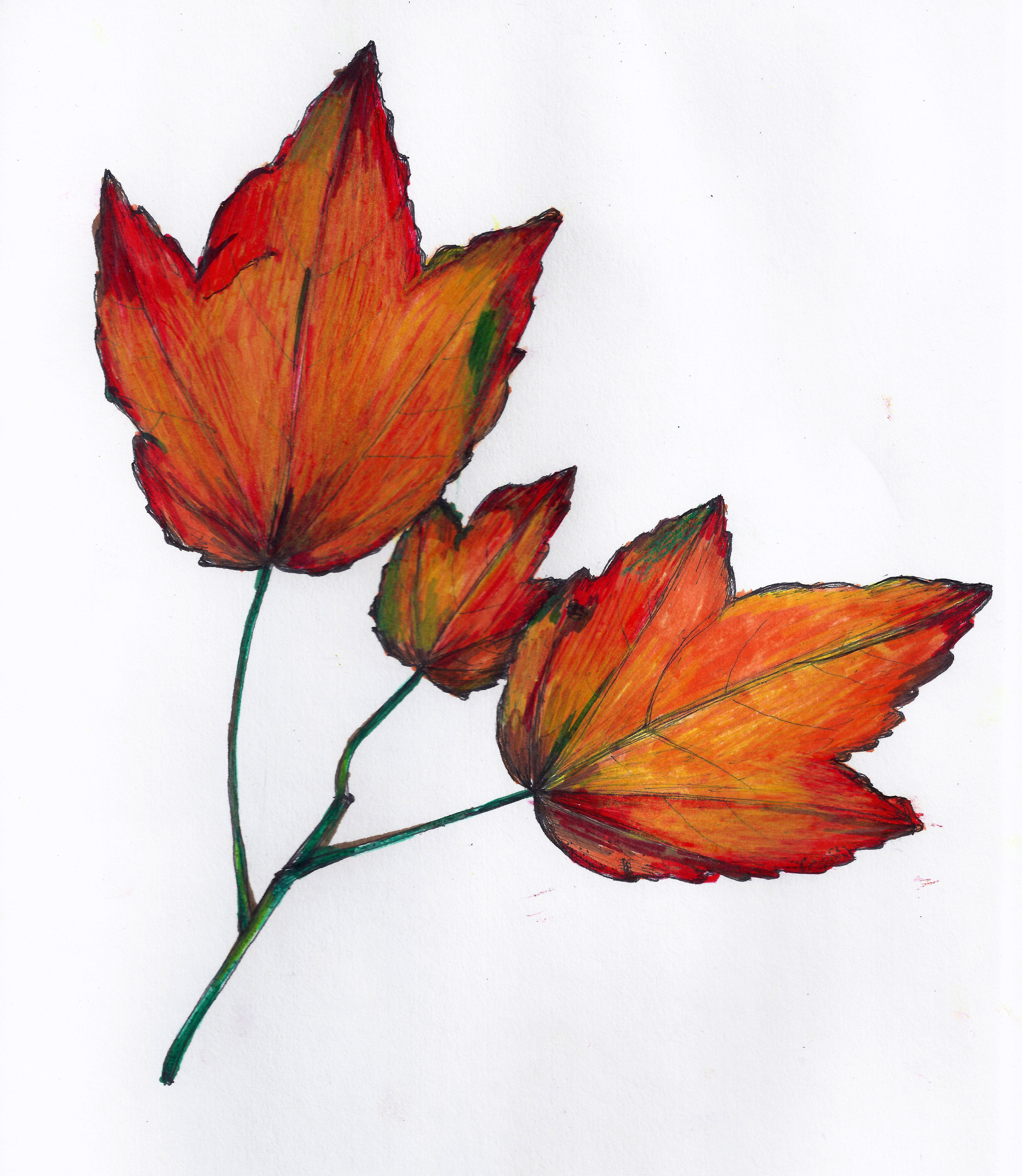Exercise 4.2: Colored Pencil Techniques
Exercise 4.2: Colored pencils are a great tool for creating beautiful botanical illustrations. There are so many beautiful examples of drawings created in colored pencil.
Colored pencil can be used on a variety of papers. Textured papers such as watercolor and pastel papers work very well. For more detailed and fine work, especially drawing technical illustrations, smooth papers will offer you the most successful outcome.
For this exercise we are going to illustrate leaves. This is a great exercise for color blending and shading. This is one of my favorite exercises - seeing all the beautiful color combinations from your illustrations is a great joy.
Start by finding a few interesting leaves. Do not be concerned if you are not in an area with colorful leaves. You can look for other natural objects that show color combinations: flower petals, insects, even stones! The purpose of this exercise is to advance your skills in color blending and shading.
Think about an interesting composition. You may include more than one leaf that can overlap.
Start by lightly outlining your leaf subject with pencil. You may put an outline base of pen to try an interesting mixed media, as seen below. This technique allows for smooth and clean edges and can bring a bold image to life. This technique can also be used at the end of illustrating.
Once your subject is laid out, observe the colors found in your leaf. Next find your base colors. For leaves, these are typically greens and browns. Rather than trying to match the color you are looking for exactly with the pencil, try layering your colors. This gives your picture a vibrancy and depth that no single layer of color can. With a light stroke, color in your base colors. Then work on your other colors with layering.
When all your colors are shown, continue with shading, highlights and details. Some details to remember to illustrate are the veins and possible tears, holes or insect damage in the leaves.
The last step (if you are working with ink as well), will be to re-edge those veins and edges with your pen tool to make your illustration stand out. However, do not over-do this method -- you may find that less is more, and will not want a black margin, for example, around the entire margin of your subtly vibrant work.
Spend 20-30 minutes on the illustration. Scan and submit for grading with your signature, date and name of the specimen.
